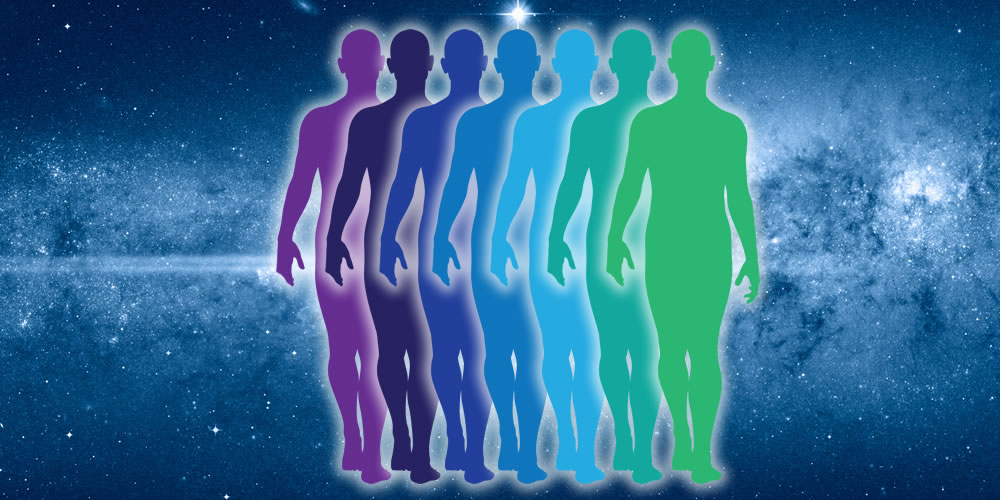The Seven Principles of the Human Constitution
In regard to man’s mortal and immortal life, we have placed these seven principles into two groups – one containing the three higher principles and therefore called the Triad, the other containing the four lower, and therefore called the Quaternary. The Triad is the deathless part of man’s nature, the “spirit” and soul of Christian terminology; the Quaternary is the mortal part, the “body”, of Christianity.
The following is a brief outline of these Seven Principles, providing only a small segment of a large body of knowledge. We would suggest a thorough study of these principles in order to fully understand their meaning.
1st principle—Sthula Sharira (Dense Physical Body) The dense physical body of man is called the first of his seven principles, as it is certainly the most obvious. Built of material molecules, in the generally accepted sense of the term – with its five organs of sensation - the five senses - its organs of locomotion, its brain and nervous system, its apparatus for carrying on the various functions necessary for its continued existence, there is little to be said about this physical body in so slight a sketch as this of the constitution of man.
2nd principle— The Linga Sharira , (Etheric Double) the astral body, the ethereal body, the fluidic body, the double, the wraith, the döppelganger, the astral man – such are a few of the many names which have been given to the second principle in man’s constitution. The best name is the Etheric Double, because this term designates the second principle only, suggesting its constitution and appearance: whereas the other names have been used somewhat generally to describe bodies formed of some more subtle matter than that which affects our physical senses, without regard to the question whether other principles were or were not involved in their construction.
3rd principle— Prana (the Life) All universes, all worlds, all men, all brutes, all vegetables, all minerals, all molecules, and atoms, all that is, are plunged in a great ocean of life, life eternal, life infinite, life incapable of increase or diminution. The universe is only life in manifestation, life made objective, life differentiated. Now each organism, whether minute as a molecule or vast as a universe, may be thought of as appropriating to itself somewhat of life, of embodying in itself as its own life some of this universal life.
4th principle—Kama Rupa (desire Body) In building up our man we have now reached the principle sometimes described as the animal soul, in Theosophical parlance Kâma Rûpa, or the desire-body. It belongs to in constitution, and functions on, the second or astral plane. It includes the whole body of appetites, passions, emotions, and desires which come under the head of instincts, sensations, feelings and emotions, in our Western psychological classification, and are dealt with as a subdivision of mind.
5th principle— Manas, Thinker, The Mind. The word Manas comes from the Sanskrit word man, the root of the verb to think; it is the Thinker in us, spoken of vaguely in the West as mind. I will ask the reader to regard Manas as Thinker rather than as mind, because the word Thinker suggests someone who thinks, i.e., an individual, an entity. And this is exactly the Theosophical idea of Manas, for Manas is the immortal individual, the real “I”, that clothes itself over and over again in transient personalities, and itself endures forever.
6th principle—The Sixth Principle in man Buddhi (the intellectual principle), though a mere breath, in our conceptions, is still something material when compared with divine “Spirit” (Atma) of which it is the carrier or vehicle. Fohat . . . is shown allegorically as trying to bring the pure Spirit, the Ray inseparable from the ONE absolute, into union with the Soul, the two constituting in man the MONAD.
7th principle—Atma (Universal Self) The human immortal Monads—the Atma, or the irradiating Spirit of every creature of the human family. (The Secret Doctrine, 1:120) As many men on earth, so many Gods in Heaven; and yet these Gods are in reality ONE, for at the end of every period of activity, they are withdrawn, like the rays of the setting sun, into the Parent Luminary, the Non-Manifested Logos, which in turn is merged into the One Absolute.


